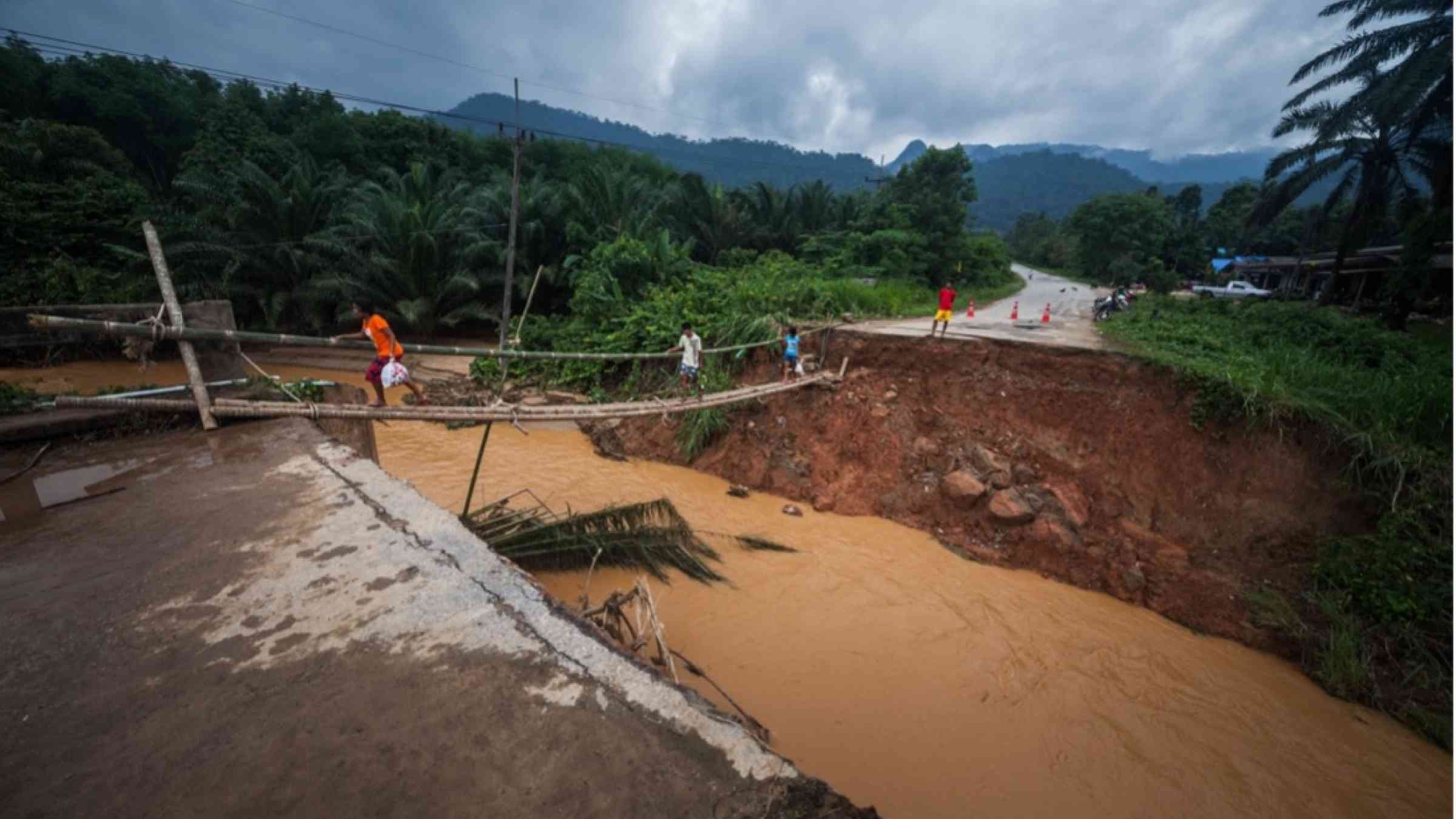The kick-off the Third Multi-Hazard Early Warning Conference (MHEWC-III), part of the Preparatory Days of the Global Platform 2022 (GP2022).
This year's theme is: From Stock Take to Scaling Actions on Target G: Accelerating the Knowledge and Practice of Early Warning Systems for Risk Informed Resilience.
As we approach the mid-point of the Sendai Framework for Disaster Risk Reduction, MHEWC-III provides a unique opportunity to review key accomplishments, share skills, experience, and expertise within an active network of early warning practitioners.
The MHEWC-I: Saving Lives, Reducing Losses took place 22-23 May, 2017 in Cancún, Mexico, as a pre-event to the Fifth Session of the GPDRR (GP2017). The MHEWC-II took place in Geneva, Switzerland 13-14 May, 2019 as a pre-event to the Sixth Session of the GPDRR (GP2019). The MHEWC-III builds on the progress and achievements of the first two conferences.
Agenda
- Opening remarks
- IN-MHEWS Partners Introductory Video
- Keynote Speech
- Interactive Icebreaker
Background and Context
The Sendai Framework was adopted by 187 Member States at the Forth United (UN) World Conference on Disaster Risk Reduction in Sendai, Japan, on March 18, 2015 “to achieve the substantial reduction of disaster risk and losses in lives, livelihoods and health and in the economic, physical, social, cultural and environmental assets of persons, businesses, communities and countries over the next 15 years”. Seven years into the implementation of the Framework, the Disaster Risk Reduction community has an excellent opportunity to take stock of where we are, what we have accomplished, what we have learned, and to jointly explore how we can collectively transform our engagement to accelerate progress in achieving the Framework’s ambitions.
The mid-point of Sendai Framework implementation marks a time of increased global urgency. Disasters strike at an unprecedented rate, with the most recent decade experiencing an over three-fold increase in the frequency of disaster occurrence, compared to the 1980s. Moreover, disasters are also becoming more costly, setting back the global economy by an average of USD 170 billion every year. Reducing mortality, the number of people injured, displaced, and left without a livelihood has never been more challenging given the scale of the COVID-19 pandemic.
The climate emergency further threatens to impede progress, with the latest IPCC report heralded as a ‘code red for humanity’. Leading scientists across the globe brought together irrefutable evidence that human-induced climate change is already affecting weather and climate extremes. Projections for the coming decades indicate climate changes will increase in all regions. In the best of all scenarios, we must adapt to more extreme weather, water, and climate events.
Considerable progress has been made by national meteorological, and hydrological services (NMHSs), geosciences (geophysics), regional organizations, civil protection agencies, the international community, private sector entities and other stakeholders towards increasing availability of and access to multi -hazard early warning systems (MHEWS), in contribution to Target Gi. However, the risk landscape is changing rapidly driven by climate change and unwise development pathways, and a systemic approach for inclusive early warning and early action for all hazards is becoming urgently necessary.
Investments in preparedness and response capacities have been significant by governments disaster management entities, development and humanitarian partners, including through increasingly uptake of anticipatory approaches linked with adaptive social protection mechanisms. Benefits of these efforts can be accounted for the recent findings of the WMO Atlas for Mortality and Economic Loss (1970-2019), which found a significant reduction in mortality related to hydrometeorological events. However, the report also notes that there has been a significant increase in economic losses due to weather, climate and water extremes. Therefore, there is an opportunity for the international community to reconsider MHEWS design to better connect the systems to decision making across the range of timescales.
Moreover, as noted in the recommendations of the 2020 State of Climate Services – Risk Information and Early Warning Systems, more investments are needed to fill the capacity gaps, especially in LDCs (such as Africa) and SIDs for effective EWS. Furthermore, there are emerging resources to support countries in better assessing and monitoring the effectiveness of their MHEWS to ensure systems are delivering desired benefits. Practical training and feedback on the CREWS ‘Measuring Effectiveness of Early Warning System through Sendai Framework Monitoring’ set of custom indicators were developed which provide a measure on the quality/effectiveness of MHEWS.
From stock take to scale on Target G, MHEWC-III will develop recommendations for GP2022 to enable transformation to a systemic approach to inclusive early warning and early action for all hazards to reduce impacts and losses.
Expected Outcomes
- Outcome statement to feed into GP2022 thematic session on early warnings and early action that puts forward recommendations to enable transformation for multi hazard EWS enabling risk-informed early action to reduce impacts and losses
- Roadmap/Agenda with strategic priorities, governance arrangements and joint work program for IN-MHEWS updated and voluntary commitments by partners confirmed
- Contribution to a stock take on progress in the implementation of Sendai Framework target G
- Methodologies and frameworks for assessing effectiveness of EWS/ Target G custom indicators disseminated
- Contribute to a validated Words into Action guide on Multi-hazard Early Warning Systems
Guiding Themes
- Enablers of transformative change
- Multi-sector governance
- Gender sensitive early warning systems
- Inclusive, people centered risk-informed systems
- Risk knowledge and impact-based forecasting
- Anticipatory action
- Risk communication and warning dissemination
- Monitoring, evaluation and learning
- Science, technology and innovation
- Public-private partnerships
